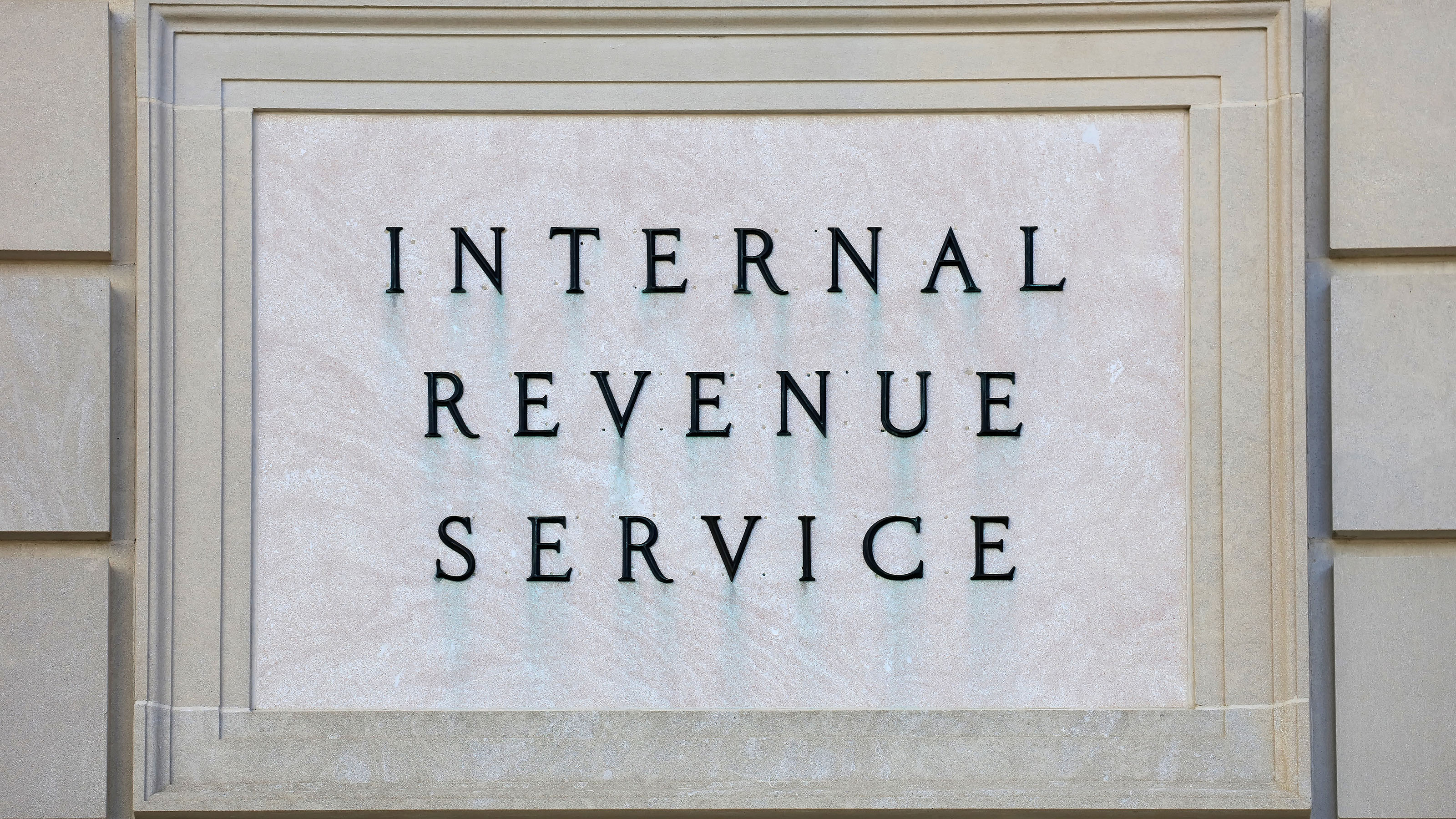Incorrect ERC? IRS Points to Five New Red Flags
The IRS says these signs could mean there's a problem with your Employee Retention Tax Credit claim.


The IRS identified another wave of warning signs related to incorrect Employee Retention Tax Credit (ERC) claims.
The latest handful of red flags come from common issues IRS compliance teams have spotted while reviewing and processing claims from the pandemic-era tax credit. (These are in addition to seven indicators the IRS underscored earlier this year.)
The red flag alert comes as the agency doubles down on ERC compliance and claims scrutiny after recently restarting processing, reopening its Voluntary Disclosure Program, and delivering up to 30,000 letters to capture over $1 billion worth of fraudulent or incorrectly claimed credits.

Sign up for Kiplinger’s Free E-Newsletters
Profit and prosper with the best of expert advice on investing, taxes, retirement, personal finance and more - straight to your e-mail.
Profit and prosper with the best of expert advice - straight to your e-mail.
Here's what you need to know.
Five IRS ERC red flags
When filed correctly, the ERC is a refundable tax credit designed to help businesses who continued to pay employees during COVID-related business shutdowns. As previously reported by Kiplinger, numerous abusive promoters advertised the ability to claim the ERC to unsuspecting employers which led to countless errors and massive ERC fraud.
For business owners, the consequences of ERC fraud could lead to fines and penalties, and at worst — to criminal charges or imprisonment.
Here are five new trends that suggest your ERC is incorrect.
1. Claiming family members wages as qualified wages
When it comes to family-owned businesses, the ERC has certain limits for majority owners and their related employees. For one, the ERC guidelines don’t consider wages paid to individuals who own more than 50% (majority owner) of the business as eligible for the credit.
Additionally, wages paid to family members of the majority owner don’t qualify for the ERC. Some examples of “related individuals” include:
- A child or a descendent of a child
- Your sibling or stepbrother, or stepsister
- Your father, mother, or ancestor, or either
- Stepfather or stepmother
The IRS also counts nieces and nephews, aunts or uncles, and any in-laws as related members that wouldn’t qualify for the ERC. Household members or an individual who lives in your principal household for the tax year wouldn’t be eligible either. Your spouse would also be considered a relative for purposes of this IRS scrutiny.
2. Claiming wages already used for the Paycheck Protection Program
Generally, you can claim both the ERC and Paycheck Protection Program loan forgiveness, as long as you don't report the same wage. In other words, if you’ve already reported certain wages for the PPP, they will no longer count as qualifying wages for the ERC.
3. Lack of evidence to support a government-ordered business shutdown
Some employers have been deemed ineligible for the ERC because they haven’t been able to offer sufficient proof that a government order caused a full or partial shutdown of business operations due to COVID.
To be eligible, government orders must be official and not a suggestion by a local official. Additionally, the qualifying government orders must be at the local, state, or federal level. Some examples include:
- An order was made from the city’s mayor stating that all non-essential businesses must close for a specific period.
- Your state issued an emergency proclamation ordering a shelter-in-place period, many times this excluded essential workers.
- A local official imposed curfews on residents that impacted business operating hours.
- Your local health department issued an order mandating business shutdowns.
That being said, any communications from the Occupational Safety and Health Administration (OSHA) generally aren’t considered government orders and aren’t eligible for the ERC.
4. Employers claiming wages for employees who provided services
Another recurring error was that some large employers falsely claimed wages for employees who were providing services during these ‘business shutdown’ periods.
For instance, if your employees worked remotely during the pandemic and your business continued to operate, the IRS would determine that your business or trade wasn’t suspended.
5. Essential businesses that could fully operate during the pandemic and didn’t have a decline in gross receipts
As previously reported by Kiplinger, promotors convinced many essential businesses that they could claim the ERC, when they weren’t eligible. In many cases, these employers didn’t partially or fully suspend business operations because employees continued to work as usual.
That doesn’t mean that essential businesses can’t claim the ERC. In fact, if your business experienced a significant decline in gross receipts during 2020 or the first three quarters of 2021 you can still make a claim. Employers can determine if there was a decline in gross receipts by comparing fiscal year 2020 or 2021 with the corresponding quarter in 2019.
- For 2020, you begin qualifying in the quarter when your gross receipts are less than 50% of those in the same quarter in 2019. You no longer qualify once gross receipts are more than 80%.
- For 2021, the gross receipts must be under 80% compared to the same quarter in 2019.
Improper ERC denials in the mix
As part of its ongoing compliance measures, the IRS delivered several waves of disallowance letters to taxpayers and businesses that showed a high risk of incorrect ERC claims. The agency sent 28,000 letters early last month, which would have prevented up to $5 billion in improper payments.
However, 10% of tax professionals and businesses who received letters disagreed with the IRS decision, IRS Commissioner Danny Werfel first told Tax Notes (paywall). What's more, those taxpayers were eligible for the ERC.
Werfel told Tax Notes that the IRS would be working on lowering the error rate below in future waves of denials.
If you've received a disallowance letter from the IRS and suspect the agency got it wrong, act quickly. Here's what you can do to appeal your ERC claim:
- Request an administrative review of the decision with the IRS Independent Office of Appeals
- Under IRS administrative rules, you'll have 30 days to submit your appeal from the date of the notice of claim of disallowance
You can also ask your trusted certified tax professional to send a response to Appeals or see if you are eligible for Appeals Fast Track. Just make sure to collect all relevant documentation that supports your claim.
Keep in mind, this will likely be a lengthy process. According to the Taxpayer Advocate (TAS) once your protest goes to Appeals it can take up to five months or longer to hold an initial Appeals conference on your claim.
What can happen if my ERC is incorrect?
The IRS is making headway as it ramps up ERC claims processing. In March, the agency released seven signs of incorrect ERC claims including, but not limited to:
- Too many quarters claimed
- Too many employees and wrong calculations
- Citing supply chain issues
If you suspect your ERC claim could have an error, the IRS recommends you use its ERC Eligibility Checklist tool. It could also be helpful to consult with a qualified and trusted tax advisor to help spot incorrect claims.
Remember, the IRS temporarily reopened its Voluntary Disclosure Program, which offers businesses a 15% discount when repaying credits for certain tax periods. The program will run through Nov. 22 and can be an opportunity to self-report ERC errors at a discounted rate.
Related Content:
- IRS Restarts Processing of Some ERC Refunds: What to Know
- What's Happening With the Employee Retention Tax Credit
- IRS Urges Employers to Participate in ERC Voluntary Disclosure Program
- Who Does the IRS Audit the Most?
Get Kiplinger Today newsletter — free
Profit and prosper with the best of Kiplinger's advice on investing, taxes, retirement, personal finance and much more. Delivered daily. Enter your email in the box and click Sign Me Up.

Gabriella Cruz-Martínez is a seasoned finance journalist with 8 years of experience covering consumer debt, economic policy, and tax. Before joining Kiplinger as a tax writer, her in-depth reporting and analysis were featured in Yahoo Finance. She contributed to national dialogues on fiscal responsibility, market trends and economic reforms involving family tax credits, housing accessibility, banking regulations, student loan debt, and inflation.
Gabriella’s work has also appeared in Money Magazine, The Hyde Park Herald, and the Journal Gazette & Times-Courier. As a reporter and journalist, she enjoys writing stories that empower people from diverse backgrounds about their finances no matter their stage in life.
-
 Get Netflix, Hulu and Apple TV Plus for Free by Joining T-Mobile
Get Netflix, Hulu and Apple TV Plus for Free by Joining T-MobileT-Mobile customers save up to $35/month on streaming services thanks to this Netflix, Hulu and Apple TV Plus bundle. Here’s how to get it.
By Rachael Green
-
 Missed Tax Day? You Could Still Be Eligible for These Valuable Tax Refunds
Missed Tax Day? You Could Still Be Eligible for These Valuable Tax RefundsTax Refunds As many as one million taxpayers could be missing out on a significant tax refund.
By Gabriella Cruz-Martínez
-
 Missed Tax Day? Nearly One Million Taxpayers Still Can File and Claim Valuable Tax Refunds
Missed Tax Day? Nearly One Million Taxpayers Still Can File and Claim Valuable Tax RefundsTax Refunds As many as one million taxpayers could be missing out on a significant tax refund.
By Gabriella Cruz-Martínez
-
 Ask the Editor: Reader Questions — April 18, 2025
Ask the Editor: Reader Questions — April 18, 2025Ask the Editor: Taxes, April 18, 2025 — Joy Taylor, The Kiplinger Tax Letter Editor, answers questions on amended returns, property and deductions.
By Joy Taylor
-
 How Many IRS Commissioners Have We Gone Through This Year?
How Many IRS Commissioners Have We Gone Through This Year?IRS Who were the former IRS commissioners, and why did they resign? Find out how IRS turnover can impact your taxes.
By Kate Schubel
-
 Which Generation Pays the Most Tax in the US?
Which Generation Pays the Most Tax in the US?Tax Burden Polls show that most people feel like taxes are unfair. But which age group bears the brunt of the tax burden in the United States?
By Kelley R. Taylor
-
 Tax Day 2025: Don’t Miss These Freebies, Food Deals and Discounts
Tax Day 2025: Don’t Miss These Freebies, Food Deals and DiscountsTax Day You can score some sweet deals on April 15 in some select restaurants like Burger King, Shake Shack, and more.
By Gabriella Cruz-Martínez
-
 Tax Time: Does Your Kid Influencer Owe Taxes?
Tax Time: Does Your Kid Influencer Owe Taxes?State Tax Some minors are making big money on social media. Here’s how to know if they need to file taxes.
By Gabriella Cruz-Martínez
-
 Ask the Editor: Reader Questions — IRAs, RMDs and PTPs.
Ask the Editor: Reader Questions — IRAs, RMDs and PTPs.Ask the Editor: Taxes, April 11, 2025 — Joy Taylor, The Kiplinger Tax Letter Editor, answers questions on Roth IRAs, RMDs and other retirement accounts.
By Joy Taylor
-
 Trump Plans to Terminate IRS Direct File program
Trump Plans to Terminate IRS Direct File programTax Filing The IRS Direct File program was piloted last year in 12 states and has since expanded to 25. But will it last under the Trump administration?
By Gabriella Cruz-Martínez